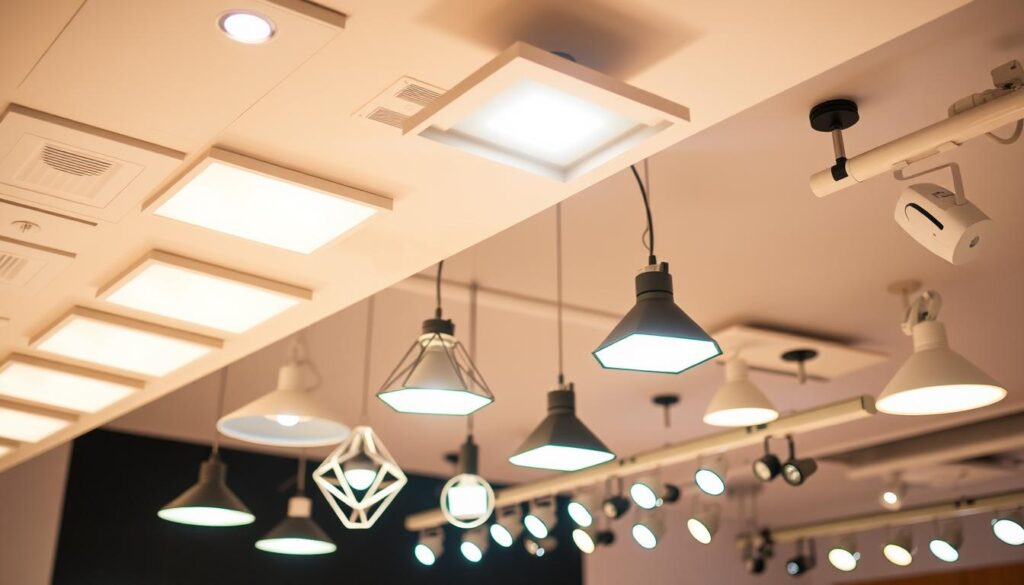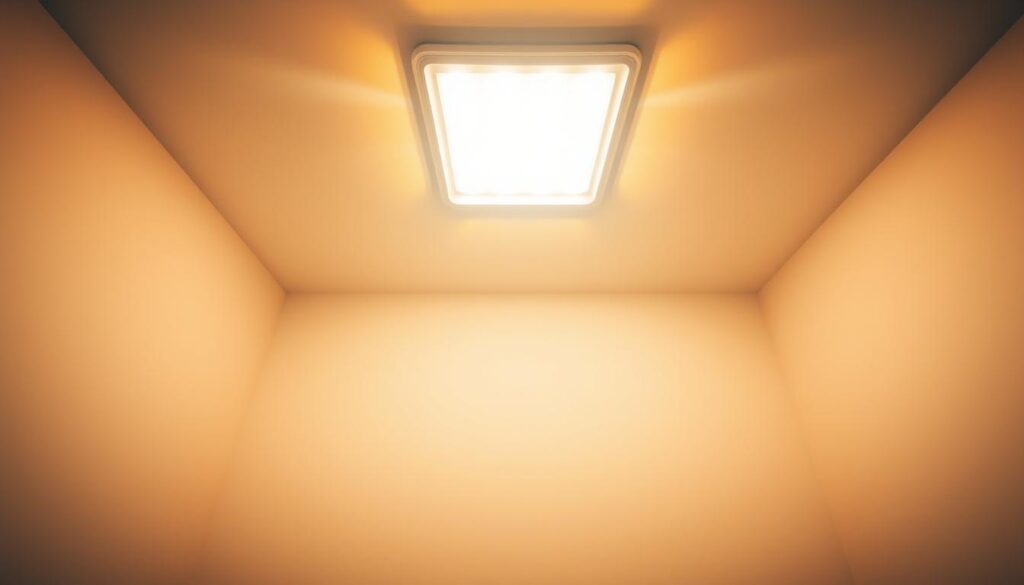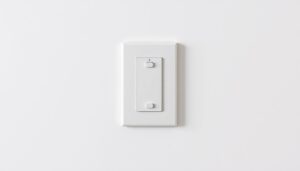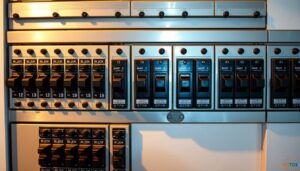Are you still using halogen bulbs in your home or office? You’re probably missing out on significant energy savings and better lighting quality. Replacing halogen bulbs with LED alternatives is a straightforward process that can be completed in minutes, and it’s a smart move towards reducing your energy consumption.
LEDs offer a better luminous efficacy, meaning they provide more light while using less energy. By making the switch, you can save roughly 90% of the energy used by your old halogen lighting. This not only reduces your energy bills but also contributes to a more sustainable environment.
Key Takeaways
- Replacing halogen bulbs with LEDs is a simple DIY project.
- LEDs offer superior energy efficiency and longer lifespan.
- The transition from halogen to LED lighting can save you a significant amount on your energy bills.
- LED alternatives are available for various halogen light sources.
- Proper installation and compatibility considerations are crucial for a successful swap.
Understanding Halogen and LED Technology
To make an informed decision about switching from halogen to LED bulbs, it’s essential to understand the technology behind both types of lighting. This understanding will help you appreciate the differences in their performance, efficiency, and lifespan.
What Are Halogen Bulbs?
Halogen bulbs are an improved version of traditional incandescent bulbs, using a tungsten filament enclosed in a compact quartz capsule filled with halogen gas. This design allows the filament to burn hotter and more efficiently, producing a bright, warm light. When electricity flows through the tungsten filament, it heats to approximately 2,500°C, generating significant heat as a byproduct.
How LED Lighting Works
LED stands for Light Emitting Diode, a highly energy-efficient lighting technology that produces light through the movement of electrons rather than burning a filament. LEDs work by converting electricity directly into light photons through semiconductor materials, making them up to 90% more energy-efficient than halogen bulbs.
| Characteristics | Halogen Bulbs | LED Bulbs |
|---|---|---|
| Lifespan | 2,000-4,000 hours | 25,000-50,000 hours |
| Energy Efficiency | Less efficient | Up to 90% more efficient |
| Heat Output | Significant heat | Minimal heat |
Benefits of Switching from Halogen to LED
Upgrading to LED lighting from halogen bulbs brings several key benefits. You can expect significant improvements in energy efficiency, lifespan, and overall safety.
Energy Efficiency and Cost Savings
LED bulbs use up to 90% less energy than halogen bulbs to produce the same brightness. At three hours per day of usage, an LED bulb can save over £15 per year in electricity costs. By switching to LED lighting, you can reduce your lighting energy consumption by 80 to 90% or more each year.
Longer Lifespan
While halogen bulbs typically last between 2,000-4,000 hours, quality LED bulbs have an impressive lifespan of 25,000-50,000 hours. This extended lifespan means you might never need to replace them in some fixtures, reducing maintenance costs.
Reduced Heat Output
Halogen bulbs convert approximately 90% of their energy into heat rather than light, while LEDs run much cooler. This reduced heat output not only reduces fire risks but also potentially lowers your home cooling costs during summer months.
| Feature | Halogen Bulbs | LED Bulbs |
|---|---|---|
| Energy Consumption | High | Low (up to 90% less) |
| Lifespan | 2,000-4,000 hours | 25,000-50,000 hours |
| Heat Output | High (90% of energy) | Low |

Compatibility Considerations Before You Swap
When upgrading from halogen to LED, several compatibility considerations come into play. To ensure a smooth transition, you need to assess a few key factors.
Identifying Your Halogen Bulb Type
Before purchasing LED replacements, you’ll need to identify your existing halogen bulb type, including the base fitting (such as E27, E14, GU10, or G9) and whether it’s a single beam or dual beam bulb for headlights.
Choosing the Right LED Replacement
Understanding brightness equivalence is crucial – rather than focusing on wattage, you should compare lumen values to ensure your new LED provides the same light output as your old halogen bulb.
Understanding Brightness and Colour Temperature
Colour temperature, measured in Kelvins, determines the “feel” of your lighting – traditional halogen bulbs produce warm white light (below 3,300K), while LEDs offer options ranging from warm white to cool daylight (over 5,300K).
Additional considerations include checking if your existing setup includes dimmer switches, in which case you’ll need to select specifically “dimmable” LED bulbs, and ensuring the physical dimensions of your new LED bulbs will fit properly.
Tools and Materials Needed
Replacing halogen bulbs with LEDs requires some essential tools and materials to be done safely and efficiently. Having the right equipment on hand will make the process smoother and help you avoid potential hazards.
Essential Tools for Safe Installation
For a safe installation, you’ll need a pair of clean cotton gloves to handle the new LED bulbs, a voltage tester to confirm the power is off, and needle-nose pliers for removing old bulbs from tight spaces. A small step ladder may also be necessary for reaching ceiling fixtures.
Optional Equipment for Easier Installation
Optional equipment can make the job easier. Consider using a headlamp for working in dark spaces, a bulb grabber tool for hard-to-reach fixtures, and a smartphone or camera to document the original wiring configuration for complex installations.
How to Swap Halogen Bulbs for LEDs Safely
Replacing halogen bulbs with LED bulbs can be done safely with proper precautions. Before starting, it’s essential to understand the basics of the replacement process.
Safety Precautions Before Starting
Before removing your old halogen bulbs, ensure they are completely cool. Halogen bulbs can reach extremely high temperatures, so it’s crucial to wait at least 10 minutes after turning them off. Always switch off the power at the circuit breaker to prevent electric shock.
Step-by-Step Replacement Process
To replace your halogen bulbs with LEDs, first, note the fitting type (screw or bayonet base), diameter, and other specifics like beam angle or brightness level. Purchase compatible LED bulbs that match these specifications. Carefully remove the old halogen bulb by unscrewing or twisting it anti-clockwise. Handle the new LED bulb by its base to avoid damaging the components. Install the LED bulb by aligning it with the socket and gently turning it clockwise until secure.
Testing Your New LED Lights
After installation, restore power and test your new LED lights. Check for any flickering or unusual behaviour, which might indicate incompatibility with existing dimmers. Adjust the positioning if needed for optimal light distribution.
| Step | Action | Precaution |
|---|---|---|
| 1 | Turn off power | Switch off at circuit breaker |
| 2 | Allow bulbs to cool | Wait at least 10 minutes |
| 3 | Remove old bulb | Unscrew or twist anti-clockwise |
| 4 | Install new LED bulb | Handle by base, secure clockwise |
Dealing with Common Issues
When transitioning to LED lighting, you may encounter several common issues that can be easily resolved with the right knowledge. Understanding these challenges will help you make a smoother switch from halogen bulbs.
LED Flickering Problems
LED flickering is often caused by incompatibility between older dimmer switches and LED bulbs. Even if you’ve purchased “dimmable” LEDs, you may need to replace your dimmer switch with an LED-compatible model to resolve this issue.
Dimming Compatibility Challenges
Not all LED bulbs are dimmable, and those that are may require specific dimmer switches. Ensure that your LED bulbs are compatible with your existing dimming system, or consider replacing the dimmer switch with one that’s designed for LEDs.
Heat Dissipation Concerns
While LEDs produce less heat than halogen bulbs, enclosed fixtures can still trap heat and potentially shorten LED lifespan. Look for LEDs specifically rated for enclosed fixtures to mitigate this issue.
Special Considerations for Different Fixtures
When swapping halogen bulbs for LEDs, different fixtures require special considerations to ensure optimal performance. You need to consider the specific requirements of each type of fixture to get the most out of your LED bulbs.
Recessed Downlights
For recessed downlights, it’s crucial to choose LED bulbs specifically rated for enclosed fixtures. This is because recessed downlights often have limited ventilation, and using the wrong bulb can lead to overheating and reduced lifespan. Look for LED bulbs that are designed to operate in enclosed spaces.
Spotlights and Track Lighting
When replacing halogen bulbs in spotlights and track lighting, pay special attention to the beam angle. Halogen spotlights typically have narrow beam angles (15-35 degrees), so you’ll want to match this with your LED replacements for similar lighting effects.
Outdoor Lighting Fixtures
For outdoor lighting fixtures, you need LEDs with appropriate IP (Ingress Protection) ratings to withstand moisture and temperature fluctuations. Look for bulbs rated at least IP44 for covered areas and IP65 for fully exposed locations to ensure durability.

Maximising the Benefits of Your New LED Lights
To get the most out of your new LED lighting, consider a few strategic adjustments. LEDs offer numerous benefits, including energy efficiency and a longer lifespan compared to halogen bulbs.
Optimal Placement for Best Lighting
Positioning your LED lights correctly can significantly impact their effectiveness. For instance, the directional nature of LED lighting allows you to focus light exactly where needed, potentially reducing the number of fixtures required. For more information on LED lighting, visit The Guardian’s LED lights guide.
Energy-Saving Tips
To maximise energy savings, consider installing motion sensors or timers in areas like hallways and outdoor spaces. This can significantly reduce unnecessary lighting usage. Additionally, using LED bulbs with lower wattage can contribute to overall energy efficiency.
Extending LED Lifespan
Avoiding frequent on/off cycling and ensuring adequate ventilation around fixtures can help extend the lifespan of your LED bulbs. Investing in reputable LED brands like Philips or CREE also ensures better quality and longer lifespan.
Conclusion
Replacing halogen bulbs with LEDs is one of the easiest and most cost-effective home improvements you can make, offering immediate energy savings and superior lighting quality.
Throughout this guide, we’ve covered the fundamental differences between halogen and LED technology, as well as the steps for safely installing your new LED bulbs in various fixture types. LEDs consume up to 90% less energy and last up to 25 times longer than halogen bulbs, making them a significantly more economical choice in the long run.
By making the switch to LED lighting, you’ll not only reduce your energy bills but also contribute to a more sustainable future. With LED technology continually advancing and prices falling, now is the perfect time to upgrade your home’s lighting.



